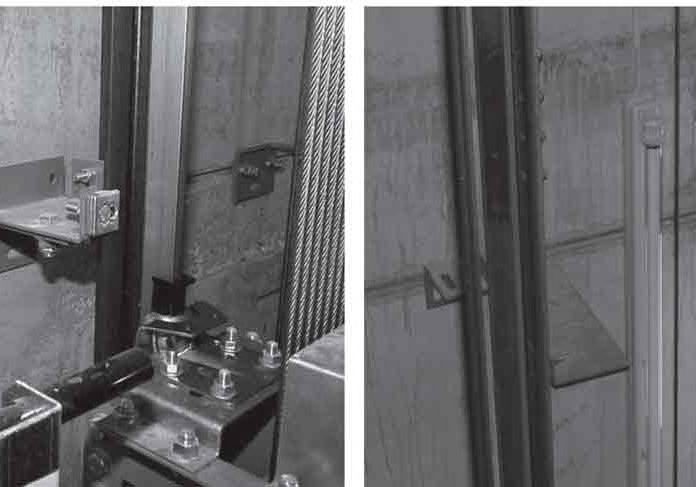Since 1977, EHC Global has been a leading manufacturer and supplier of escalator handrails worldwide. During this time, the company has developed a number of handrail products, such as its thermoplastic “NT” handrails, in addition to various escalator safety products, such as safety brushes, antimicrobial handrails and handrail signage solutions.
Over the past decade, EHC has engaged a strategic diversification process, which has seen the firm venture into manufacturing other products related to the lift industry. This strategy successfully led EHC into a joint venture with a U.S.-based polyurethane (PU)-roller manufacturer in 2006, which positioned production at an EHC facility in Shanghai. EHC later purchased its partner’s share of the joint venture and became its sole owner. EHC has since developed in-house expertise in formulating PU-roller compounds, which allow EHC to offer rollers for a variety of applications in various industries, including the lift segment.
PYROGuard
Due to industry demand, EHC focused its attention on the development of PYROGuard™ flame-retardant (FR) PU for use in elevator door-hanger rollers. EHC had been approached at different times by several potential customers in North America and Europe requesting FR PU rollers that could pass strict large-scale “full door assembly” fire tests for code approval. The most commonly accepted tests for elevator doors are in the harmonized European code EN 81-58: Safety Rules for the Construction and Installation of Lifts, “Examination and Tests: Landing Doors Fire Resistance Test” and the UL 10B Standard for Fire Tests of Door Assemblies. Through research, it was found that a typical mode of failure in these tests was the burning and flaming of the elevator door-hanger roller.
EHC was first challenged to effectively evaluate the FR PU formulations developed to determine success. As large-scale elevator-door tests are time consuming and expensive to construct and conduct, it would not be efficient to evaluate each formulation on large-scale EN 81-58 or UL 10B tests. It was, therefore, decided to use the small-scale Underwriters Laboratories (UL) “94 Vertical Burn” test to achieve a “V-0 rating at a thickness of less than 2.0 mm” as passing criteria.
The development of the FR PU formulation was initiated by first discussing the application with our PU raw-material suppliers. It quickly became apparent none of them had any immediate solution available to impart fire resistance to the rollers. Technical discussions were undertaken with experts at several major FR chemical suppliers, and EHC sourced a variety of flame retardants of different chemistries. These were systematically evaluated by making FR PU formulations using various single FR chemicals, as well as a large number of combinations of different flame retardant chemistries. Initially, the evaluations were performed by mixing the FRs into the PU raw materials, then curing the mix into plaques, which were then used to perform various tests.
FR PU formulation development had to take into account a number of requirements, such as:
- The FR PU formulation had to pass the UL “94 Vertical Burn” test with a V-0 rating at less than 2 mm thick. Specifically, PUs have a tendency to drip and burn during combustion. In order to get a V-0 rating, this must not happen.
- The FR PU formulation had to provide a material with such good physical properties as tensile strength, elongation at break, compression modulus, compression set, etc. As a baseline, EHC compared the properties of its FR PU with a standard non-FR PU material of the same hardness.
- The initial hardness selected was 95 Shore A, so the ingredients of the FR PU material had to be chosen to give a cured FR PU of around 95 Shore A.
The elevator door-hanger roller made with the final FR PU material had to pass a series of roller durability tests typically specified by the OEMs of elevator doors, such as a “roller running under load against a drum” test for 1,100 hr.; a recovery from flat-spot test; a door-open and -close test for two-million cycles; a hydrolysis test involving 300 hr. of submersion in water at 70°C; then the roller-durability “drum” test for 300 hr.
After developing and testing several iterations of FR PU formulations, EHC was able to finalize a formulation that met all development criteria, including making elevator door-hanger rollers that passed all the durability tests specified. EHC recommends the use of these door-hanger rollers in elevator doors, with the understanding that the materials used in making the door assembly, together with the design of the door, play critical roles in the success of the door assembly in the EN 81-58 and UL 10B tests.
Get more of Elevator World. Sign up for our free e-newsletter.









